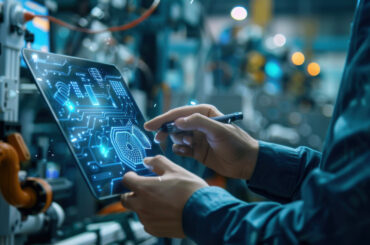The craziness that is the Consumer Electronics Show (CES) is and always will be the blur to jump start my recovery from the holidays. It remains one of the busiest weeks on the calendar for any attendee, much less an automotive industry analyst. At the event, I formally met with more than 30 automotive suppliers and manufacturers (not including all the informal introductions, run-ins, and booth/coffee chats), all eager to provide updates on their latest announcements, partnerships, and investments. If time and travel wouldn’t have been a constraint, that number would have been much higher.
IDC’s vantage point provides an interesting perspective on the state of the industry and the goal posts (both for individual companies and for the industry as a whole) that it wants to be measured by. That is why, one month later, I wanted to share a few thoughts on key themes that resonated from my attendance at the show.
Staying Focused and Not Succumbing to the Glitz and Glamour of Las Vegas
Overall the next-generation ecosystem kept its focus on continuing the progress and efforts established and extended throughout 2019. This included a concerted push to advance the pillars of ACES (autonomous, connected, electrified, and shared) through technology development, partnerships, business models, and industry and regulatory cooperation.
More so, the ecosystem has learned from its prior mistakes and remained (generally) disciplined to avoid the proclamation of aggressive, often unrealistic, deployment commitments and promises (especially around fully autonomous vehicles). This semi-constant, continued drumbeat of progress showed one more important step that the automotive industry is learning to adapt to an accelerating rate of change.
Deploying Autonomy at Scale Means More Than Just Robo-Taxis
Although SAE Level 4 and 5 robo-taxis remain a key R&D focus for automotive manufacturers and suppliers, semi-autonomous Level 2+ capable systems were noticeably prominent at this year’s event. In particular, announcements by suppliers including ZF, Qualcomm, and Mobileye showed that there is continued interest in deploying autonomy through increasing ADAS (advanced driver-assistance systems). These Level 2+ systems, targeted for private, consumer owned vehicles, enable autonomously controlled steering, acceleration, and braking (under certain conditions), with the trade-off that the human driver always remain vigilant and responsible for the vehicle’s action.
Further, the cost efficiencies for these Level 2+ systems highlighted at this year’s event (sub $1,000) show a pathway for voluntary technology phase-in beginning with luxury brands and models and extending into mass market vehicle programs over time. Also, it is worth mentioning that getting consumers familiar with increasing autonomy, gradually, in their owned vehicles may aide their familiarity and willingness to try and utilize robo-taxis. The industry has a ways to go to convince consumers to utilize this technology, as only 47.9% of U.S. vehicle owners indicated that they would be willing to try a fully autonomous vehicle if available today.
Aligning Ecosystem Components to Optimize Cost and Accelerate Development
Simplification was a term used by multiple supplier and manufacturers during meetings to explain where they will be investing in 2020. To define what “simple” means is actually quite difficult, but (to me) centers around any technology developed, partnerships forged, and purposeful integration made to remove the barriers to the deployment and adoption of new platforms, products, and services.
In the context of automotive, this definition extends one step further to include the need for diverse deployments at scale, extended lifecycle support, adaptability over-the-air, and global availability. The event reinforced how the automotive ecosystem has recognized the need to adopt standardized frameworks, tools, and technologies, often adapted from the world of IT, to support future initiatives and growth. This has facilitated the collaboration of tier suppliers, industry organizations, and technology providers to utilize CES as a showcase for such progress and demonstration.
This included efforts from Amazon and Microsoft, who are utilizing their cloud, edge, AI, smart assistant, and multi-channel customer experience assets to build a coalition of partners to push the end-to-end boundaries of automotive from manufacturing to dealerships. This also includes professional service and outsourcing firms such as Capgemini and Accenture, who continue to evolve their portfolios and capabilities to better utilize open-source and horizontal technology platforms to enable custom, flexible, and repeatable automotive solutions.
Adapting Location Services and Technology to Meet Current and Future Automotive Needs
CES 2020 reiterated the need for the broader role that location services will play as autonomous and connected vehicle technologies continue to mature. This includes how suppliers are designing and developing specialized products and services tailored to address use cases across safety, convenience, and efficiency.
In particular, CES provided the backdrop for HERE Technologies’ introduction of its connected mapping service HERE Lanes that was developed to support the growing need for 3D, lane level maps for Level 2/2+ vehicles ADAS systems. This also included announcements made by Continental, NXP, and HID Global, to evangelize the adoption of Ultra-wide band (UWB) for automotive use cases including keyless vehicle access, vehicle personalization and settings, as well as closer integration with IoT technology. IDC is excited to help the automotive ecosystem continue to build on the momentum and strong start displayed at CES 2020. Should you have additional interest in learning more about IDC’s perspective on CES or any of these announcements mentioned in this blog post, contact us today.




